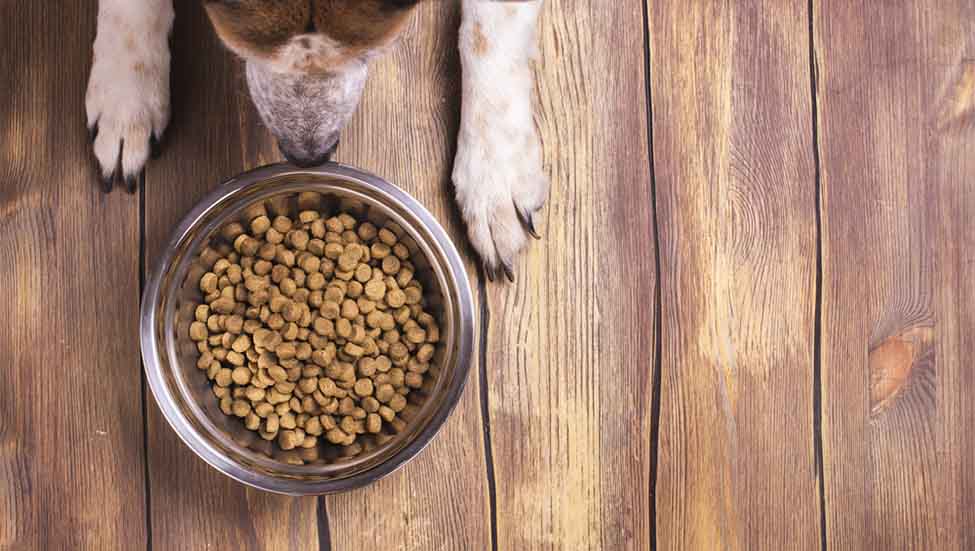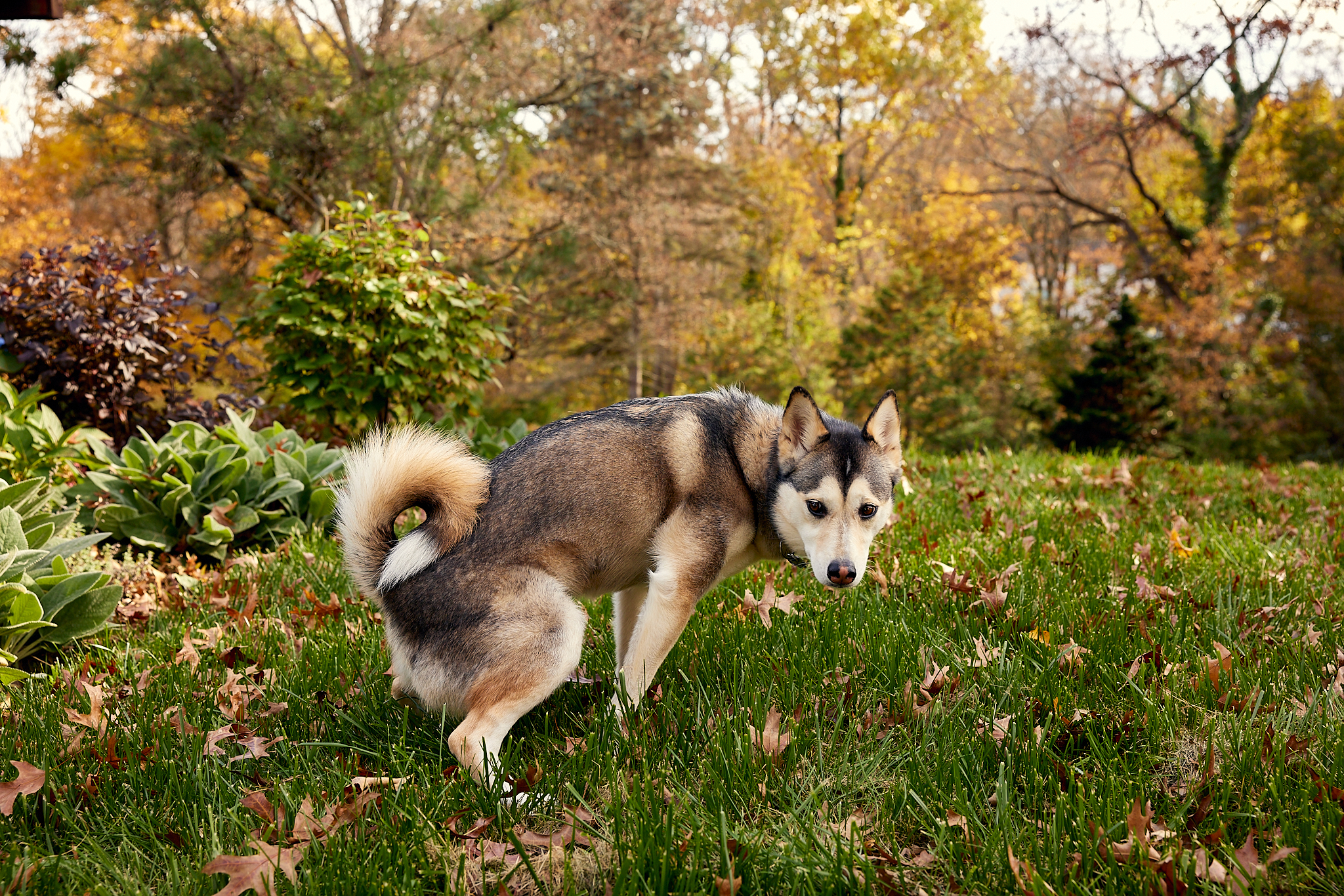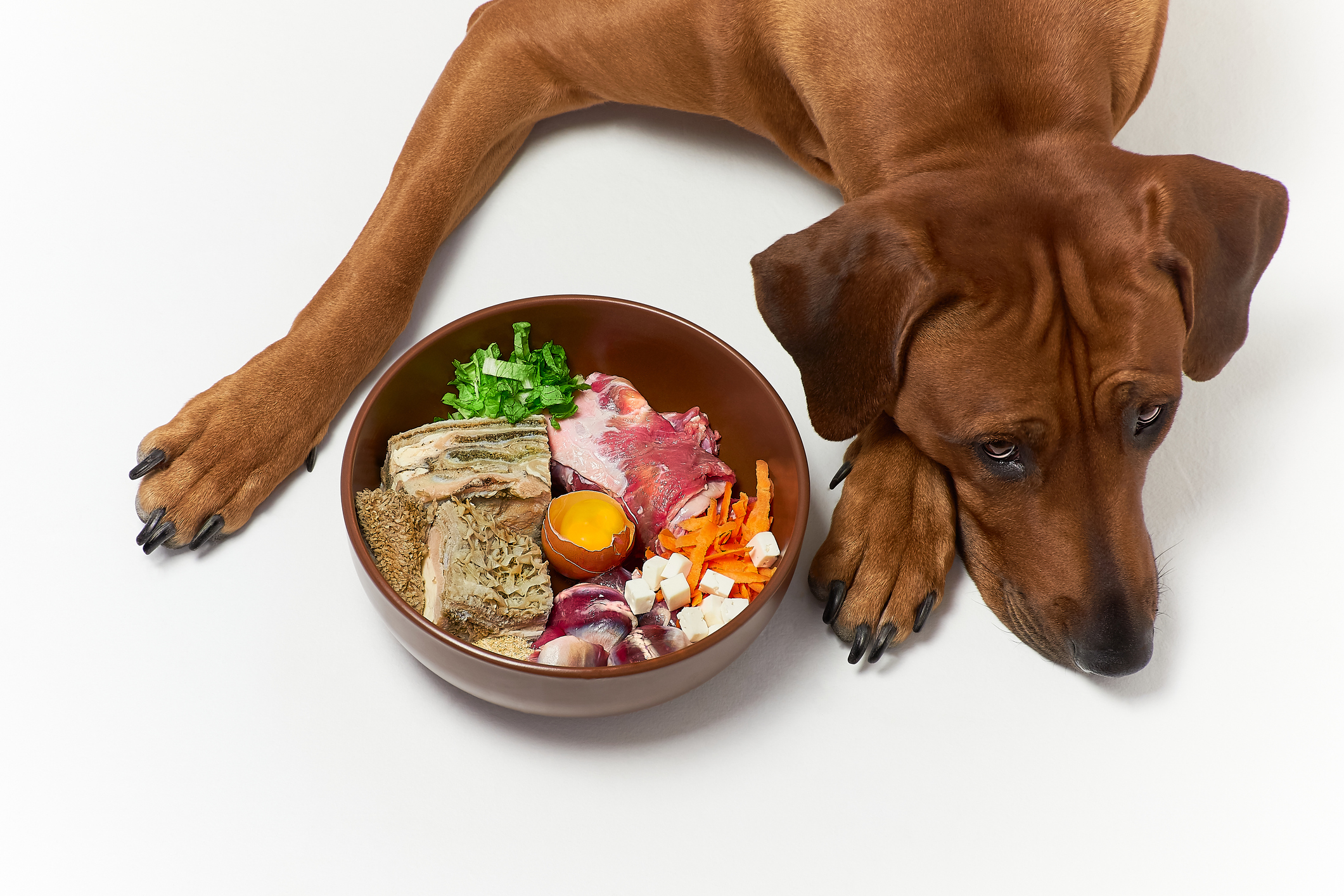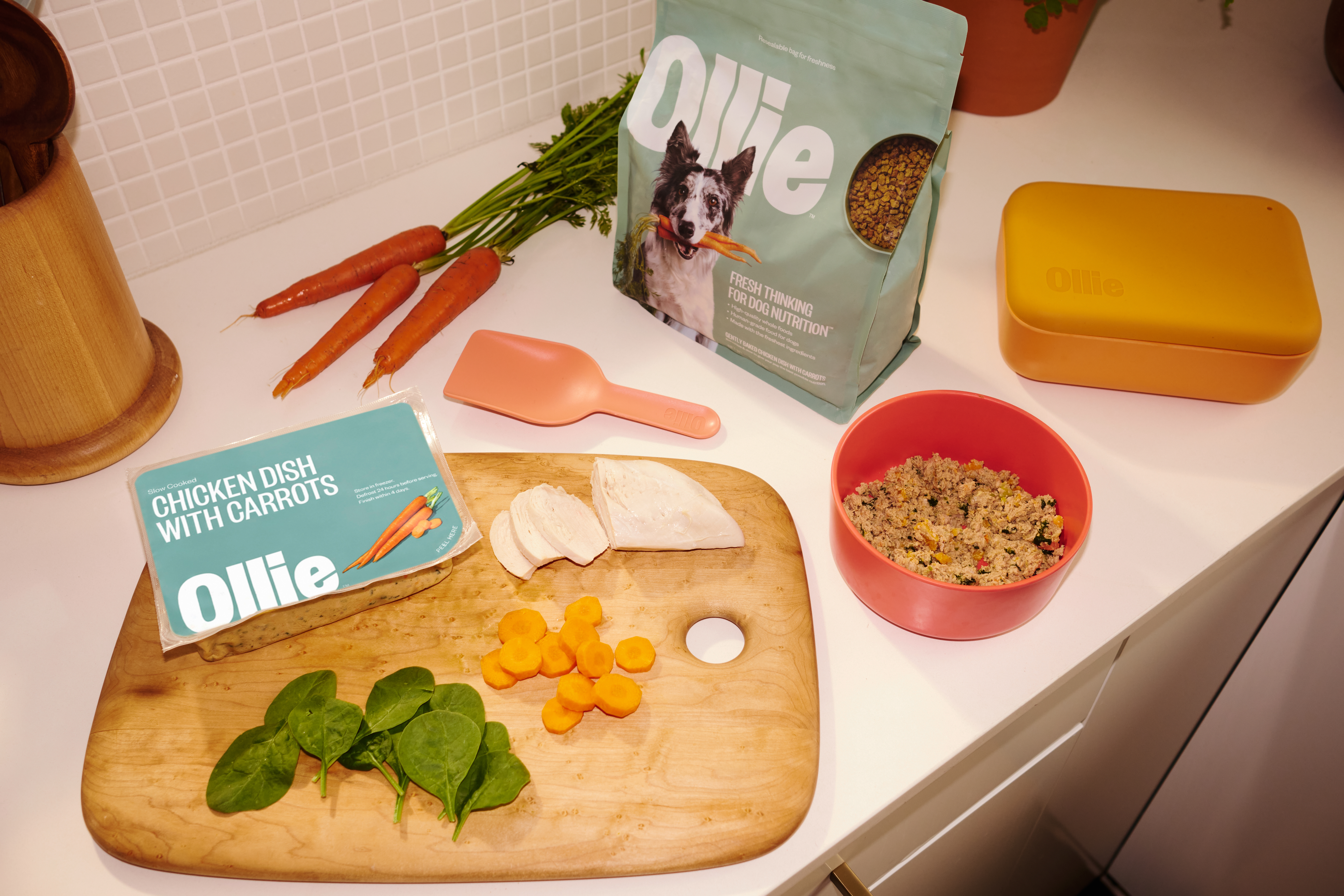Hey Ollie blog readers! We’re offering you an exclusive 60% OFF your starter box! Try now!
You try to limit the amount of processed food you eat, but what about your pups? If they’re consuming a diet primarily made up of commercial food and processed treats, the foods they consume are likely treated with lots of additives to make them more appetizing. Many traditional dog food companies do this to cater to pups’ cravings: “Dogs have a stronger preference for sweet, fat, and meat flavors,” says Lindsey Bullen, DVM, DACVN, a small animal clinical nutritionist at the Veterinary Specialty Hospital of the Carolinas. Find out how brands often play up those flavors with natural and chemical additives—and what that means for your dog’s nutrition:
Palatants
A main way dog food companies pump up the flavor of their products is by applying palatants to the food. These additives aren’t necessarily unnatural; they are flavored coatings to help replace flavors that are lost during processing and drying the food, says Nancy E. Rawson, MSc, Ph.D., associate director of Monell Chemical Senses Center in Philadelphia. Palatants can come from a variety of sources: animal digests (i.e., chemically or enzymatically broken down animal tissue); certain amino acids (like lysine, cysteine, or glycine); inorganic acids (such as phosphoric or hydrochloric); spices and molasses or sugars. These could be harmful in excessive amounts but generally aren’t unhealthy in the appropriate quantities, says Bullen.
Fat
Sometimes companies add fat as a coating to their kibble, to improve the flavor or to help other powdered flavorings like the palatants stick to the food, says Rawson. “Just the addition of fat coating as a palatant does not mean the diet is a high fat diet," says Bullen, “it’s all about proportions and balancing the nutrients.” But the added fat—which often comes in the form of animal fat or corn oil—could pump up the calories. So check the recommended serving size on the food’s label, and consult your vet before assuming added fat is okay for your pup. Most healthy dogs can tolerate it just fine, but those who are overweight, have pancreatitis or a GI disease should avoid it.
Sugar
Another popular additive to dog food is sweet stuff: Sugar, honey, and molasses are often used to create roasted flavors, explains Rawson. Dogs do need glucose, so some sugar is not necessarily bad for them to consume. But, says Bullen, the amount of sugar depends on the concentration in the food, and it does up the caloric content—so make sure to stick with the recommended serving size. And steer clear of an excess of food with added sweets if your dog is diabetic or has cancer or respiratory disease.
Unidentified animal fat
It’s not uncommon to see the vague phrase “animal fat” on a dog food label. The main reason for this, says Rawson, it that “it gives the brand the flexibility to change sources to use the one that works best or is more available without changing the label.” While the term does not mean the fat source is definitely lower quality than if the label specified chicken or pork fat, for example, it could mean the source is a rendered byproduct coming from an organ of the animal other than muscle.
Salt or other forms of sodium
Dog food brands don’t really load up on sodium as we typically think of it, since salty flavors don’t exactly get canines salivating. But some add sodium nitrite to their products to give them an appealing pink or red color and to prevent the growth of bacteria. It’s the same chemical added to human processed foods like bacon and hot dogs—and research has found a link between sodium nitrite and cancer, suggesting it might be carcinogenic. “Sodium nitrite can be toxic in high doses, but small amounts are okay for use as a preservative,” says Bullen. European countries limit the amount of the chemical in pet foods, but the US does not.
Feeding without additives in your dog’s diet
At Ollie, we started making fresh pet food because we wanted our pups to lead the longest, healthiest lives possible. Our delicious Recipes feature human-grade meats, carefully selected fruit and vegetables, healthy grains and health boosting super foods.
We gently cook our food and seal it in airtight packaging. It is then delivered to your door frozen – no additives or preservatives needed. Our food is safe and your pups will find it absolutely delicious. You can store these packages in your freezer until you are ready to feed. Then, just let them thaw in the refrigeratior for about 24 hours.
The Ollie blog is devoted to helping pet parents lead healthier lives with their pups. If you want to learn more about our fresh, human-grade food, check out MyOllie.com.
Tagged As:

The nutrition your dog needs,
the food they want.

Enjoying our articles? Subscribe our Newsletters and get new articles directly to your inbox
You might also like
3 July 2025
5 MINS READ
How Fresh Food Can Help Your Dog Have Perfect Poops
As a pup parent, you’re likely very familiar with your dog’s bathroom habits. While it may not be the most glamorous part of taking care of your pup, a dog’s stool can be one of the most dir…
by Ollie Pets
3 July 2025
5 MINS READ
Understanding the Risks of Raw Dog Food
When it comes to choosing the right diet for your dog, understanding the full picture is crucial for making an informed decision. In this article, we’ll dig deeper into what defines a raw diet, …
by Ollie Pets
3 July 2025
4 MINS READ
Understanding a Balanced Diet for Your Dog
As a dedicated pet parent, you want to provide the best for your dog, and that starts with their food bowl. We all understand the basics of a balanced diet for ourselves, but what does that look l…
by Ollie Pets







